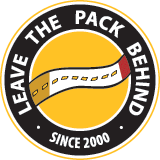Interesting Stuff
Latest News
Smokeless Tobacco
No longer just a practice of baseball players and cowboys, smokeless tobacco in the form of chew tobacco (spit), snuff or snus has become a popular cigarette alternative.
What you don’t know CAN hurt you
Perhaps like many people you are unaware of the potential health risks associated with chew tobacco or snuff, after all, most of the tobacco information we hear is about cigarettes right?
Just because you haven’t heard of them, doesn’t mean the risks associated with this smoking alternative don’t exist. In fact the health consequences of chew and snuff are just as frightening as those associated with cigarettes.
Beyond the 3,000 chemicals found in smokeless tobacco, snuff and chew also contain carcinogens (the stuff that causes cancer), at least 28 of them! 1, 2 , 3 These agents have been shown to lead to an increased risk of oral cancer and in long-term users the risk for cheek and gum cancer can actually be 50x greater. 1 Your lips, tongue, throat and oesophagus are also put at risk for cancer (how does having your tongue removed sound to you?) 2,4 Further studies have also found that the risk for pancreatic cancer is increased in smokeless tobacco users. 5
No one is going to kiss a mouth like that
Gross! Lesions and white, leathery sores can appear on the gums, cheeks and tongue (some of which may be the start of cancer) of snuff or chew users. 1, 2, 6 Smokeless tobacco can also lead to periodontal disease (which can lead to tooth loss) and cause your gums to recede (ouch!). 1, 7, 2, 4 Of course chew also affects your breath (and not in a good way) and stains your teeth (not attractive!). 7 Who would want to kiss a mouth like that?!
Once you start it’s hard to stop
Smokeless tobacco contains nicotine, which as you likely know is addictive. In fact, one tin of snuff contains the same amount of nicotine as 60 cigarettes! 4 Nicotine addiction is tough to kick and people who use smokeless tobacco have been shown to go through the same withdrawal symptoms as cigarette smokers when they quit (who wants that?). 8
Want help finding healthy alternatives when quitting smoking?
Talk to your doctor, nurse, or pharmacist or visit the Leave The Pack Behind Team on our campus.
References:
1 Ontario Tobacco Research Unit (OTRU). (2007). Smokeless Tobacco and Snus: The Current Evidence for Health Risks. Retrieved April 24, 2009 from www.otru.org/pdf/updates/update_june2007.pdf
2 Alberta Alcohol and Drug Abuse Commission. (2008). Profile: Smokeless Tobacco. Retrieved April 24, 2009 from www.aadac.com/documents/profile_smokeless_tobacco_08.pdf
3 National Cancer Institute. (2003). Smokeless Tobacco and Cancer: Questions and Answers. Retrieved April 24, 2009 from www.cancer.gov/cancertopics/factsheet/Tobacco/smokeless
4 Saskatchewan Health. (2007). Facts you Should Know About Smokeless (Spit) Tobacco. Retrieved April 24, 2009 from www.health.gov.sk.ca/smokeless-tobacco-facts
5 Goldberg, M. E. (2008). Why new tobacco “harm-reduaction” products should be regulated. Journal of Public Policy and Marketing, 27(2), 182-186
6 Health Canada. (2007). Smokeless Tobacco. Retrieved April 24, 2009 from www.hc-sc.gc.ca/hl-vs/tobac-tabac/body-corps/smokeless-sansfumee-eng.php
7 Canadian Cancer Society (2006). Other Tobacco Products. Retrieved [date] from
8 U.S. Department of Health and Human Services. (1986). The health consequences of using smokeless tobacco: a report of the advisory committee to the surgeon general. Retrieved April 24, 2009 from http://profiles.nlm.nih.gov/NN/B/B/F/C/_/nnbbfc.pdf

